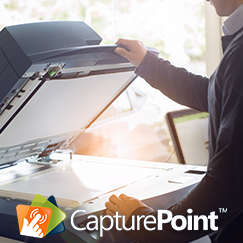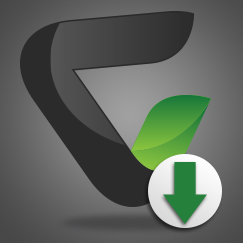
EMR, ERP, HRMS, CRM…. What are all these acronyms and how are they not a Document Management System, or DMS? First, let’s take a quick look at some of the more common acronyms and what those systems are primarily used for:
ERP – An Enterprise Resource Planning solution is a type of business process management software that allows an organization to use a system of integrated applications to manage and automate many business and back-office functions related to technology, services, and human resources.
CRM – A Customer Relationship Management software manages interactions with current and future customers – often synchronizing, organizing, and automating sales and marketing efforts.
HRMS – A Human Resource Management System is an application for human resource electronic processes and activities like benefits administration, payroll, training, and performance reviews.
EMR/EHR – An Electronic Medical Records or Electronic Health Records system manages the electronic versions of patient medical or health records maintained by the provider over time.
Ultimately, systems like those mentioned above are used to manage day-to-day operations in various ways, but they don’t manage your actual documents. Even when you have one of these systems in place you’ll still need a way to manage critical non-database information, and that’s where DMS comes in. A Document Management System’s core functionality is to track and store documents, though most solutions on the market today do considerably more than this with feature additions like workflows, approval processing, automatic notifications, eForms, packets, reporting, and more. Let’s look at a few key advantages a DMS offers over your specialized system:
- Specialized systems store all documents in a single file repository – sometimes kept within a SQL database – with a naming scheme or proprietary format only that system understands and can locate. So, that means you can only use that exact ERP or specialty system to search for files now located in one big pile in a single folder or within your database. If your ERP or specialized system is storing files in a database, you should know this has a couple of major pitfalls. One is that SQL Express, which is free, has a 10GB size limit which is something you’re likely to hit rather quickly when storing your actual files here. So, at some point you’ll have to invest in a paid version which can be in the thousands of dollars and probably require a SQL expert to manage. Secondly, as database sizes increase, the ability to locate information within them gets slower, meaning your staff will be sitting around twiddling their thumbs waiting for that search to come back. DMS handles document storage by utilizing a file system that works with key data stored in a database to keep search-speeds fast and databases small, even for heavy document-loads.
- Electronic documents are usually stored as a simple image, like a photograph, within that ERP. That means the information within the document isn’t searchable. The name which was changed by your specialized system, won’t help either – meaning you’re going to have a very difficult time locating documents later. You’ll be reliant completely on your ERP’s ability to search through the pile we mentioned earlier… keeping in mind that computers are fast, but when the data isn’t logically organized it can bring your search query to a screeching halt. DMS handles electronic documents very differently; more than just organizing your documents better, it also OCR’s documents, (short for Optical Character Recognition), which allows them to be easily found later based on the text on that page. Employing a DMS does more than store your documents, it’ll streamline your office workflows too – saving you time and money.
- Your ERP, HRMS, and EMR’s do not compress files when imaged. That means each image, no matter how big, is stored at its maximum size – way more than you need. Think of it like this; you just typed a quick one-line reminder for yourself and printed a copy to set on your desk so that you can see it later (meaning you can’t put anything over top of it or you won’t see it). A whole 8.5”x11” paper for a couple words which you could have handwritten on a post-it note that takes up 3”x3” instead. DMS not only compresses images to save space – like printing out that post-it sized note for you from the beginning.
- If you’re looking for retention policies, specialized systems simply don’t cut it since they store documents in the database rather than a file system. If you expire a record that you no longer need and want to purge it from your ERP, the linked imaged documents don’t go anywhere – they stay right where they are and continue to take up space. DMS does more than just store documents in the file system and save digital space, it’s a more logical way to implement retention policies without sacrificing application speed and efficiency long-term. Plus, most document management systems offer a variety of features that can help you meet compliance and automate many other office policies too.
- With specialized systems, the quality of your image isn’t guaranteed since images alone, rather than the data on those pages is being captured. If scanned documents are illegible and subsequently unusable, your EMR, ERP, or CRM has no method of determining an issue exists. These systems just store the image, they don’t index the data for search and retrieval or evaluate the quality of the image in any way. However, using a DMS or Document Capture Software, you’re immediately made aware of issues before hard-copies are destroyed and the data becomes physically unavailable. These applications can flag non-OCR’d data during the capture process (when the scanned image is sent to the application in question) thus bringing attention to image quality issues before hard copies are unavailable. Plus, they also index the data meaning you can search for anything found on that document to quickly find just what you need, without having to read through some list in a record.
- If you’re considering expanding your specialized system to a company-wide level, or even just to one or two other departments, you’re likely to run into hurdles because those specialized systems weren’t meant for other needs. For example, let’s say your doctor’s office has been using an EMR to store patient records and health documents. Those documents are only accessed via a link in the patient record inside your EMR. It’s a great fit for what you’ve been using it for, so you would like to use this same system for your AR department…. But you’re going to quickly find that your EMR won’t work for their needs. Why? Because accounting departments (even sub-departments within your accounting team, like payroll and AP) have different needs that won’t be met with this specialized system. Your back-office needs will likely benefit from true document management with features like workflows, approval processing, three-way matching, automatic notifications, and more.
Even if you’ve been using your ERP, EMR, or specialized system to handle your documents to-date, it’s not too late to make the move. The DMS vendor can help convert your documents and essentially sort through the pile turning that proprietary data back into searchable, logical file structures. Even though the cost to convert from the proprietary format to something more usable and friendly can be expensive, you’ll still save thousands of dollars more in hard and soft costs by making the move to the right system for the job. Document Management Software and Document Capture Software offer a host of additional features to make your paperless office more efficient and cost effective. Plus, they can even work together with your existing business software applications to create the perfect paperless office solution for your unique needs.
To learn more about how Document Management Software and Document Capture Software can help you accomplish your goals, or to learn more about meeting HIPAA, SOX, or FERPA compliance, visit us online at www.ademero.com today.
Powerful, Simple, and NO COST to get started! Download now to try our Document Scanning Software, CapturePoint, today and get 1,000 FREE images!
Download a free trial of our Document Management Software today to see just how Content Central improves your paperless office today!
Schedule a personalized demonstration today see exactly how Content Central and CapturePoint work together to create the ultimate paperless office!





